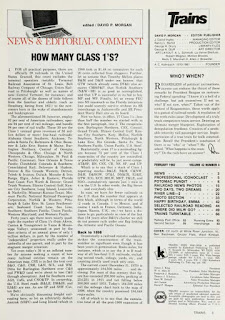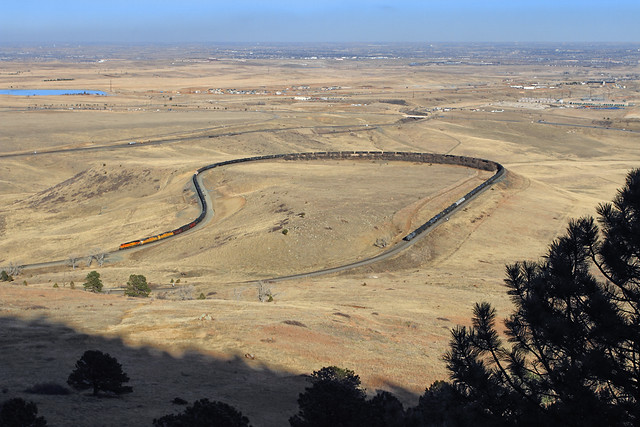-- Don Phillips Foreshadows a Near-fatal Error by Union Pacific --
No one who was watching the western railroad mergers of the 1990s can escape two incontrovertible facts.
First fact: BNSF could have kept the still-immensely popular Warbonnet paint scheme. The cost of finding a UV-resistant red and yellow would have paid for itself in public relations and railfan revenue in months if not days
Second fact: the Union Pacific and the Southern Pacific merger, while seemingly necessary, nearly destroyed the combined railroad
The first fact remains most vexing for railfans. Conversely, the second fact was more acutely felt and certainly was the most vexing problem for people dependent on the industry.
 |
| circa 1995 |
The ingredients for the problem were evidential but not entirely foreseeable, as Don Phillips wrote about them almost a year before the merger. In Trains magazine dated November 1995, he forecast a pile of bodybags for San Francisco and Denver, among other places. He claimed that the time of the "mega-merger" was really a time of the mega-takeover and that we would have four or "perhaps only two" massive rail systems.
UP has the management talent and strength to simply wipe out SP management if it wants to (which it probably does).
The newly combined UP-SP organization functioned for hours and that was all it took for problems to surface. Yards began to fill as dwell time increased. As weeks and months wore on, it only got worse Trains sat for days in sidings outside hubs with customers screaming for their goods that were so overdue, proverbially the ⌛ hourglass was supplanted by the 🗓️ calendar.
The cause of these delays was hinted at by Phillips in that same editorial. He wrote:
It has always been one of railroading's mysteries as to why SP has remained railroading's weak sister despite serving some of the country's most lucrative territory -- California and the chemical coast of Texas and Louisiana.Incidentally, Phillips also mentions that it was a real question of what would happen to the Western Pacific and Denver & Rio Grande Western routes. He added that BNSF would certainly want them either via trackage rights or outright acquisition. It may have turned out better for the Tennessee Pass if the latter had proved true. If only we could have seen a Conrail-like split out west!
In any event, I watched as it would take years for the UP merger takeover of SP to truly work out. In the simplest terms, it was a case of chemistry where Union Pacific's management crossed with Southern Pacific's infrastructure with explosive results.
More to the point, it was where a new owner took over old and different plant without truly understanding the differences of infrastructure. Like putting Windows on a Mac or Android on an iPhone, the system choked and failed to run. Worse, because the SP management was largely ushered out, there was no brain trust to help understand the how and why things were done before. Unfortunate, but it does hold value for those who want to learn their lessons from history and not necessarily from experience.




















